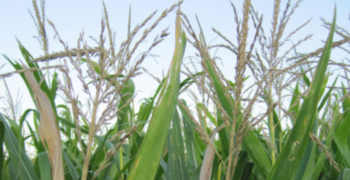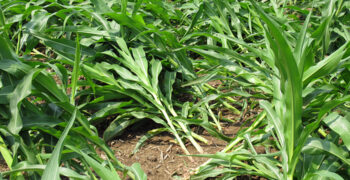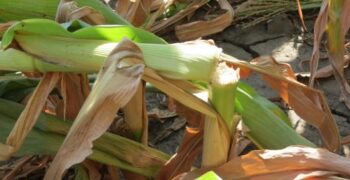Background:
Bacterial leaf streak (BLS) is a plant disease caused by bacterial pathogens that affect various grass species, particularly in agricultural settings. BLS thrives in warm and humid conditions, which fuel bacterial growth and disease development. Heavy rainfall and overhead irrigation can facilitate the spread of the bacteria within and between plants.
Causes:
BLS is primarily caused by bacteria from the genus Xanthomonas. In corn, the main pathogen is Xanthomonas vasicola pv. vasicola (Xvv), formerly known as Xanthomonas campestris pv. Zeae.
Hosts:
BLS commonly affects grasses, with corn being a notable host.
Symptoms:
Symptoms of BLS typically appear as narrow, elongated, yellow-to-tan lesions or streaks running parallel to the leaf veins. As the disease progresses, these streaks may become water-soaked and turn brown or dark red. Lesions may grow together, leading to extensive necrosis of the leaf tissue. Severely affected leaves may eventually die and drop prematurely, which can impact crop yield.
Transmission:
BLS spreads through infected seeds, crop residues, and contaminated farm equipment. The bacteria can also be transmitted by windblown rain, irrigation water and mechanical means.
Management:
Managing BLS involves several strategies:
- Use of disease-free seeds: Planting seeds certified to be free from bacterial pathogens can reduce the risk of initial infection.
- Crop rotation: Avoid planting grass crops in the same field repeatedly, as this can help break the disease cycle.
- Sanitation: Practice good sanitation by removing and destroying infected plant debris to reduce overwintering sources of bacteria.
- Fungicides: Copper-based fungicides are sometimes used to manage BLS, but their effectiveness can vary depending on timing and disease severity.
- Resistant varieties: Planting maize varieties that are genetically resistant to BLS can be an effective strategy where available.
Impact:
BLS can lead to reduced yield and quality of affected crops. In severe cases, it may also weaken plants, making them more susceptible to other diseases or environmental stresses.



